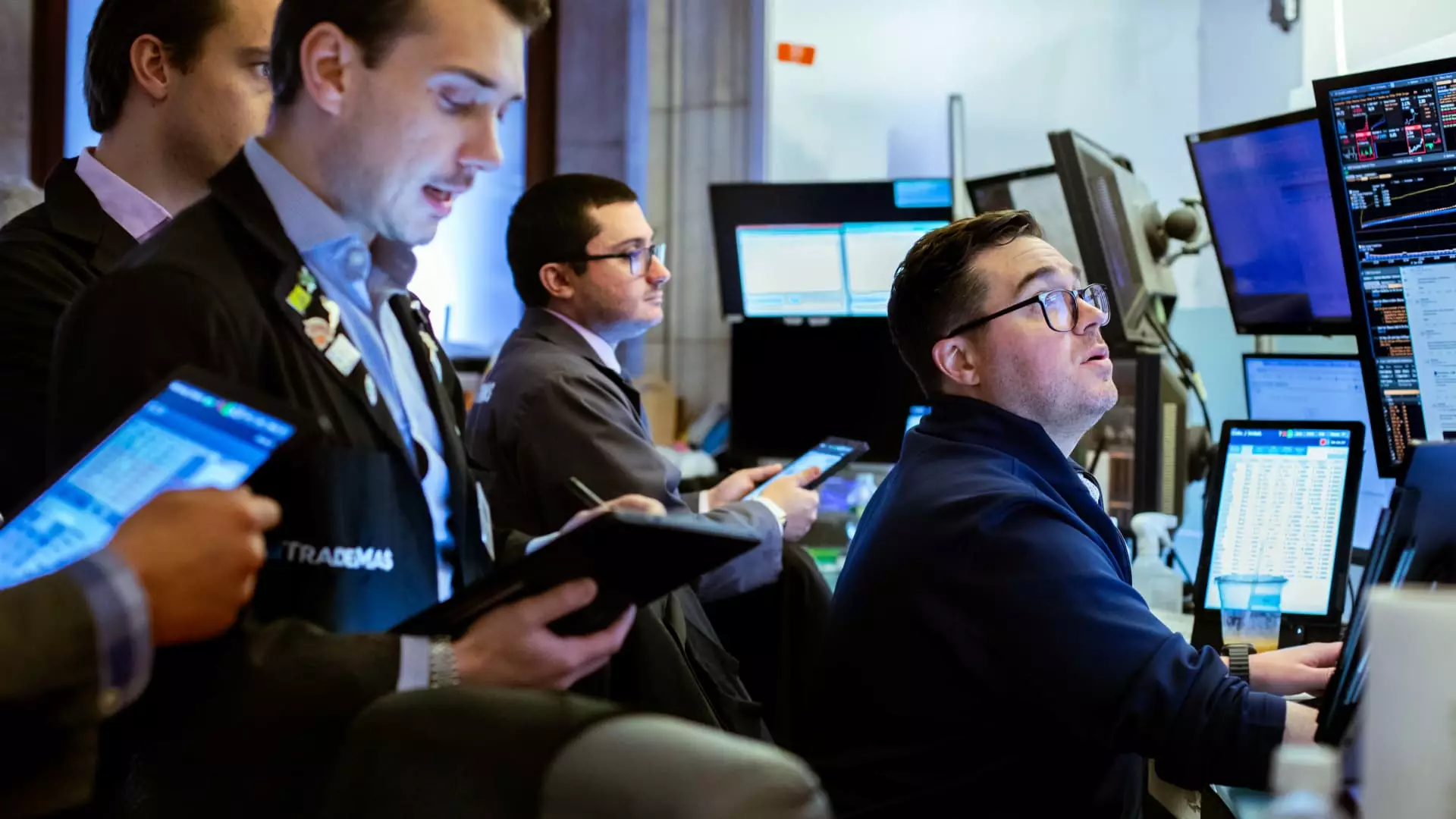In a climate marred by geopolitical turbulence and economic uncertainty, the S&P 500’s recent resurgence is nothing short of remarkable. With the index hovering tantalizingly close to its all-time high, one can’t help but marvel at how it has climbed from the depths of despair since April. At an astonishing 0.8% increase, it has not only rebounded but also shown a 2.9% increase over the week, ending at an impressive 6,141.02. It’s a vivid testament to market resilience and an undeniable signal that perhaps the collective anxiety over tax tariffs and inflation triggered by trade wars is gradually dissipating.
A Glimmer of Optimism Amid Tariff Anxiety
At first glance, the complex web of tariff deadlines suggests impending catastrophe, yet the verbal reassurances emanating from the White House have sparked flickers of hope. Spokesperson Karoline Leavitt’s comments downplaying the urgency of looming tariff implementation present an interesting narrative twist. She’s indicated that these deadlines may not be as threatening as originally perceived, a sentiment that resonates deeply with investors. It appears as though there’s a collective sigh of relief with the thought that President Trump is more inclined to postpone harsh tariffs rather than risk throwing the market into upheaval once again.
One has to question, though—at what cost does this optimism come? Are we merely ignoring the potential ramifications of such political maneuvering? The fleeting confidence inspired by Leavitt’s reassurances stands in stark contrast to economic fundamentals, which remain shadowed by uncertainty. What happens when the dust settles, and the reality of deep-seated tariff negotiations comes crashing back? While the markets cheer today, structural issues within trade are far from resolved.
The Driving Forces Behind Market Gains
It’s not just political winds steering this upward path—corporate earnings are holding strong, and the job market appears stable. The continued push of technologies like artificial intelligence is also lifting stocks, with giants such as Nvidia rising to new heights—some might argue, almost artificially so. The question lingers: are we on the brink of a technological utopia, or is this merely a speculation-driven bubble, fuelled by hysteria around potential AI advancements?
Even with all the positivity, one can’t ignore the underlying hazards. While the S&P 500 has rocketed over 27% post-April lows, it’s critical to maintain a discerning perspective. Markets could easily pivot, sending the same indices tumbling should a fresh crisis emerge. Yes, recent corporate earnings have been robust, but markets are often rife with overoptimism, ignoring the cyclical nature of economies.
Geopolitical Factors and Investor Sentiment
Recent geopolitical developments have also played a role. The tentative ceasefire between Israel and Iran has temporarily eased anxiety among investors who had fretted over escalating conflicts. And while dialogue is reignited, it’s essential to approach such news with caution. History has taught us that geopolitical shocks can unfold rapidly, striking at the heart of market sentiment and confidence. Thus, while optimism reigns today, one must tread lightly, mindful of the storm clouds that could gather once again.
The anticipation surrounding economic indicators like jobless claims highlights another layer of complexity. With numbers dipping below expectations, it appears that the economy may remain resilient—perhaps even thriving—despite the omnipresent fear of recession. Yet, every data point should be scrutinized, as markets are not impenetrable bastions of certainty.
A Delicate Balance of Euphoria and Caution
As stocks surge and record highs become mere hurdles to leap, the central question persists: should we embrace this bullish momentum or prepare for a potential downturn? Center-wing liberal observers might argue for sustainable strategies over euphoric speculation, advocating for equity in economic growth rather than unbridled boasts of achievement. Inequality, both in wealth and opportunity, remains a glaring issue, and any uncritical celebration of stock market performance could further widen these gaps.
While the return to optimism signals growth and potential prosperity, the other side is equally compelling. Engaging critically with our progress—and questioning whether it can be mirrored in the lives of everyday people—remains essential. Thus, as we observe the ebbs and flows of the stock market, we find ourselves at a pivotal junction, where the lingering tension between growth and caution holds the key to a sustainable future.


Leave a Reply